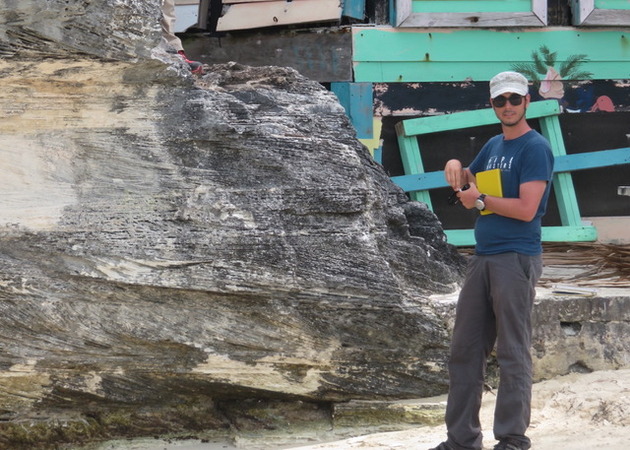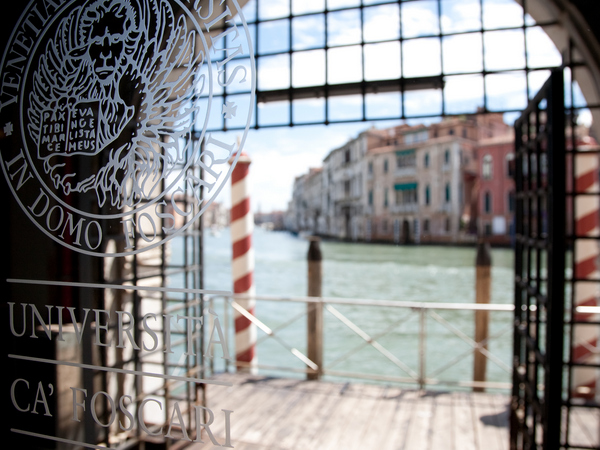"A catastrophic implosion" destroyed OceanGate's submarine Titan, some four thousand metres to the bottom of the North Atlantic Ocean. The aim of the mission, widely judged from the outset to be unsafe, was to take the passengers - a British millionaire and a Pakistani tycoon with his son, together with the pilot and the CEO of OceanGate, who all died - to the wreck of the Titanic, at a cost of $250,000 each. Luxury tourism in the abyss, in short, with a catastrophic outcome, which opened up numerous questions on the meaning and significance of these ventures.
James Cameron, besides being the director of the blockbuster film Titanic, is an explorer of the ocean depths. Aboard the bathyscaphe Deepsea Challenger, he reached the Mariana Trench, the world's deepest point at over ten thousand metres, solo to take samples of the seabed, document the environment and further scientific research. In a recent interview with National Geographic, together with his colleague Bob Baillard, Cameron defended deep-sea research, emphasising that the underwater vehicles used by scientists are "the product of meticulous testing and careful risk management", and reiterating that the Titan tragedy represents "an engineering and regulatory failure" that could have been avoided.
We discussed the issue with Alessio Rovere, Associate Professor of Physical Geography and Geomorphology at the Department of Environmental Sciences, Informatics and Statistics at Ca' Foscari and 'external member' of MARUM - Center for Marine Environmental Sciences at the University of Bremen, Germany, where he was 'group leader' for seven years before returning to Italy.
According to Rovere, ocean exploration is also one of the last, fundamental pieces of the environmental scientific puzzle, but it is not for everyone: 'one does not improvise as an explorer. Those who do research in this field prepare themselves for years, even decades,' said Rovere, who directs a European Research Council-funded research on coasts - both emerged and submerged, in the Mediterranean and the Atlantic, Pacific and Indian Oceans - to study sea-level change and improve future scenarios. Although the 'deep sea' is not exactly his field of study, he has worked side by side with those who work at great depths, and is familiar with the risks and benefits of this type of effort.
Professor, what lesson can we learn from the tragedy of the Titan?
In my opinion, that one does not improvise. Not in any activity, but even less so in great marine depths, where every technical problem is multiplied by a hundred, if not a thousand. One does not improvise either technically or humanly. I have the distinct feeling that there was already a great deal of concern about this mission from the outset, especially with regards to the inadequate equipment. I find rather frightening that anyone can access this kind of experience, as long as they can pay. Those who do this work have a thorough scientific and technical background, acquired over decades of experience. I for one wouldn't go there, I don't feel prepared to do it.
Is research being done at great depths?
Yes. To collect deep water samples, to catalogue new marine species, or to sample sediments coming from environmentally peculiar areas. One of the most advanced submarines used for research is the Alvin, of the American Woods Hole Oceanographic Institution (WHOI). With over three thousand scientific dives performed since the 1960s at an average depth of 1,800 metres, it is regarded as one of the best marine research tools. The vessels used must meet precise safety standards and must be certified by independent international institutes. The Titan lacked certification, and this is one of the biggest accusations levelled at OceanGate.
In the field of science, research is turning towards the use of remotely piloted vehicles precisely to reduce risks. One example is that of the ROV (Remotely Operated Vehicles), underwater robots connected by a cable to a ship on the surface. Some of them can reach a depth of six thousand metres. Research is also steering towards the use of 'independent' robots, programmed to travel a specific route – this field is dominated by the USA, Germany and France, but Italy, too, has centres of excellence, such as the OGS in Trieste. Germany is particularly advanced in the design of underwater robots.
What are the major risks of diving at great depths?
The pressure increases by one atmosphere every ten metres. Bodies are 'crushed', and need equipment which can withstand the pressure. Another thing is that we are not made to breathe in water, and need extra air. Thirdly, thousands of metres underwater a small failure, such as an electrical fault or a structural problem like a tiny leak, can turn into a huge problem. You find yourself in a hostile environment, which is not your natural habitat, to a pint that not even the tallest mountains can match. The ocean depths present humans with conditions that, with all due differences, are perhaps more similar to those in space. These risks, however, are known, especially to people working in this field.
At this point let me ask you: do you think it is right to do tourism at this level?
I am often asking myself this question, and the first answer is no. But I would like to dwell on one thing: during these missions, we scientists understand the urgency of preserving our planet. Perhaps involving potentially very influential people in field missions, letting them see with their own eyes the beauty and fragility of our environment, might serve to direct more funding towards research and to influence decision-makers.
How do you train a future generation of marine explorers?
In my courses I deal with all the processes that take place on the surface of planet Earth, from the peaks of the Himalayas to 50 metres below sea level. Human beings have been observing the earth's surface for about ten thousand years. Observations of the deep sea are one of the last remaining keys to complete our knowledge of the planet. We know more or less everything about the land surface, but very little about submerged areas. We know almost more about the surface of Mars than the bottom of our oceans. The 'deep sea' is the last, fascinating frontier we still have to cross. Students, scholars - anyone, in my opinion! should be seized by the curiosity to discover the underwater world.
Blue Sky research, or 'curiosity-driven science' is, in my opinion, the most important drive in the discovery of every bit of the Earth's ecosystem. The oceans play an important role in regulating the planet's climate. The deep ocean will be last in registering the effects of global warming, but when this happens it will be a disaster. Everything is connected, and this kind of exploration, if carried out in the right way, is a spur to human knowledge, not only because it is useful but also because we still know very little about it. I chose this career because as a child Jacques Cousteau was my idol.
What is the objective of your ERC project WARMCOASTS - Sea level and extreme waves in the Last Interglacial?
The project, which will be completed in 2025, studies sea-level changes on geological time scales. The aim is to understand how the sea-level has changed throughout warm climates in the past, and then to imagine how it might change in the future due to non-natural but rather human-induced climate warming. My team's work focuses on the land surface. We study the higher sea levels on the American Atlantic coast, from Patagonia to the east coast of the USA, including the tropical islands, and sample coral reefs higher than they are today to study their formation. Initial results confirm that the sea level in the previous era was 2 to 7 metres higher, and we are trying to narrow this range. The geological era under consideration had a climate very similar to the one we are targeting with the Paris Agreement.












